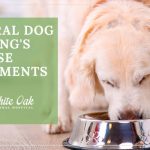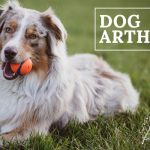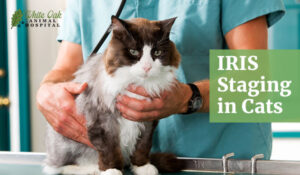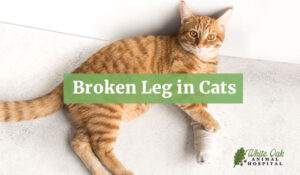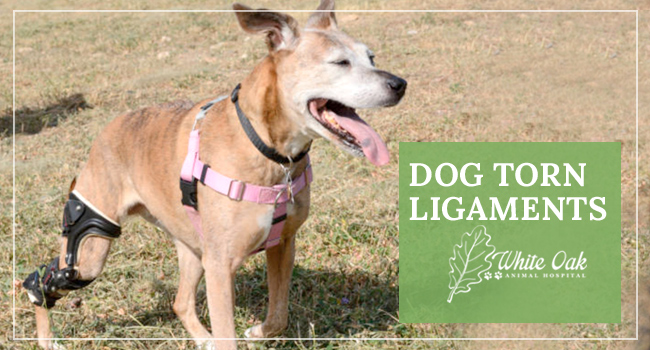
Much like humans, dogs experience joint pain for a variety of reasons.
Sometimes joint pain is related to an acute injury. Which is more common in younger dogs.
Other times joint pain is the result of slow wear and tear. Which is often the case in older pets.
Less serious injuries, such as partial dog ACL tears, may be healed with gentle treatments. Rest and supplements are often beneficial.
However, a serious injury, like a full ligament tear, often requires more drastic treatment options. Your veterinarian may recommend surgery.
Consult your veterinarian immediately if your pet is experiencing pain, lameness, or limping.
How is A Dog ACL Tear Diagnosed?
You will know if your pet is injured or in pain.
Only a veterinarian can determine the source of your pet’s injury and how to proceed.
Physical Exam
During a physical exam, your veterinarian will perform the following tests:
Sit Test: Dogs with cruciate ligament problems will sit with their leg out to the side. A healthy dog will sit with his leg flexed under his pelvis.
Medial Buttress: The medial buttress is the swelling of the inside of the joint. Your veterinarian will feel your dog’s joints to assess swelling.
Effusion Check: Swelling inside the joint is called effusion. Torn fibers in the knee will present as a swollen knee joint.
Cranial Drawer: During this test, your veterinarian stabilizes your dog’s femur with one hand, and moves their tibia with the other. If the tibia moves forward, like a drawer being opened, the torn cruciate ligament is ruptured. A partial tear of the cranial cruciate ligament or chronic cranial cruciate ligament injury presents with less cranial drawer.
Cranial Tibial Thrust: Determines the stability of the stifle joint by applying manual force.
The presence of swelling often confirms an injured ligament and/or joint.
X-Ray
Your veterinarian can confirm swelling or arthritis by x-raying the joint.
What Causes A Dog ACL Tear?
Like a professional athlete, young pets can injure themselves during running or playing too hard.
Older dogs often experience regular joint wear and tear, much like people.
Partial Tear
Partial tears occur when individual fibers of the ligament tear, but not the entire ligament.
A dog with a partial tear will exhibit some lameness and swelling, but not a complete lack of stability on the joint.
Rupture or Full Tear
Full tears are either the result of one acute injury or a slow progression over time with partial tearing.
Total joint instability is often the result of a full tear.
What Are The Treatment Options For Ligament Problems?
Your pet’s treatment will be determined by factors including severity of injury, size and weight of your pet, age, concurrent disease, and your veterinarian’s experience level.
Conservative Treatment Options
Conservative treatment is typically best for minor ACL injuries in pets weighing less than 25 lbs.
More conservative treatment options include cage rest and leash walking.
Dogs will typically respond to this treatment within six weeks.
Aggressive Treatment Options
More aggressive treatment options are best for pets with concurrent luxating patella or cartilage tears, dogs weighing more than 25 lbs., and those with full tear injuries or cruciate disease.
Options typically include different surgeries, prolotherapy, stem cell therapy and PRP (Platelet Rich Plasma).
Surgery
The most common surgeries are lateral suture, TightRope, TTA, and TPLO.
Your veterinarian can consult you on the best course of surgery for your pet.
The goal of surgery is not to repair the ligament, but to provide stability and decrease pain.
Prolotherapy
Prolotherapy uses injections in the joint to strengthen the fibrous tissue around the joint.
It is recommended for older dogs with partial tears or as a preventative measure on the healthy knee.
Stem Cell Therapy and PRP
Stem cell therapy and PRP replace or rebuild diseased tissue using certain cell components from your pet.
Powerful Tools to Help Your Dog ACL Tear Challenges
You can make many quick and easy changes at home to help you give your dog an edge on easing tendon and ligament challenges.
- Learn more about torn ligaments and cruciate disease.
- Provide joint support. PET | TAO’s Harmonize Joint is a blend of Eastern herbs and Western supplements working together to lubricate and restore your dog’s joints.
- Ease your dog’s discomfort naturally. PET | TAO’s Comfort is a blend of Eastern herbs and Western supplements to soothe your dog’s arthritic challenges to make him/her more comfortable.
- Try PET | TAO Freeze Dried Beef Liver Treats. According to TCVM, liver controls tendons and ligaments. As few as 5-6 treats per day can make a huge difference in your dog’s tendon and ligament health!
- Try a Blood-building TCVM Diet. PET | TAO Zing dog food builds Blood. According to TCVM, Blood deficiency leads to ligament tears.
- Learn more about TCVM Herbal Remedies. Chinese medicine offers many amazing natural solutions for ligament and cruciate challenges. Some good examples are:
Related Posts
-
Natural Dog Cushing's Disease Treatments
Natural dog Cushing's disease treatments are easy to use and often very successful. It's pretty…
-
Effective Relief For Allergic Dog Symptoms
An allergic dog is easy to spot! Sure, all dogs itch and scratch, but you…
-
Top Dog Arthritis Natural Remedy Options
Dog arthritis is one of the most common ailments among senior pets. After seeing white…
-
What Are the Best Herbs for Arthritis in Dogs?
Herbs for Arthritis Will Help Your Dog Feel Better Arthritis hurts! And, dogs feel pain…

